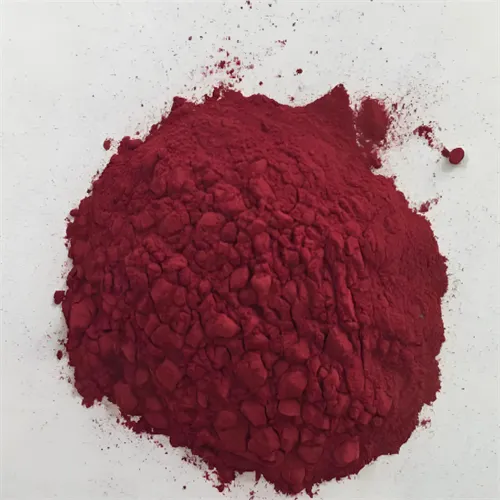Warning: Undefined array key "title" in /home/www/wwwroot/HTML/www.exportstart.com/wp-content/themes/1198/header.php on line 6
Warning: Undefined array key "file" in /home/www/wwwroot/HTML/www.exportstart.com/wp-content/themes/1198/header.php on line 7
Warning: Undefined array key "title" in /home/www/wwwroot/HTML/www.exportstart.com/wp-content/themes/1198/header.php on line 7
Warning: Undefined array key "title" in /home/www/wwwroot/HTML/www.exportstart.com/wp-content/themes/1198/header.php on line 7
- Afrikaans
- Albanian
- Amharic
- Arabic
- Armenian
- Azerbaijani
- Basque
- Belarusian
- Bengali
- Bosnian
- Bulgarian
- Catalan
- Cebuano
- China
- China (Taiwan)
- Corsican
- Croatian
- Czech
- Danish
- Dutch
- English
- Esperanto
- Estonian
- Finnish
- French
- Frisian
- Galician
- Georgian
- German
- Greek
- Gujarati
- Haitian Creole
- hausa
- hawaiian
- Hebrew
- Hindi
- Miao
- Hungarian
- Icelandic
- igbo
- Indonesian
- irish
- Italian
- Japanese
- Javanese
- Kannada
- kazakh
- Khmer
- Rwandese
- Korean
- Kurdish
- Kyrgyz
- Lao
- Latin
- Latvian
- Lithuanian
- Luxembourgish
- Macedonian
- Malgashi
- Malay
- Malayalam
- Maltese
- Maori
- Marathi
- Mongolian
- Myanmar
- Nepali
- Norwegian
- Norwegian
- Occitan
- Pashto
- Persian
- Polish
- Portuguese
- Punjabi
- Romanian
- Russian
- Samoan
- Scottish Gaelic
- Serbian
- Sesotho
- Shona
- Sindhi
- Sinhala
- Slovak
- Slovenian
- Somali
- Spanish
- Sundanese
- Swahili
- Swedish
- Tagalog
- Tajik
- Tamil
- Tatar
- Telugu
- Thai
- Turkish
- Turkmen
- Ukrainian
- Urdu
- Uighur
- Uzbek
- Vietnamese
- Welsh
- Bantu
- Yiddish
- Yoruba
- Zulu
តុលា . 20, 2024 13:18 Back to list
'exploring the diverse applications and benefits of adipic acid ...'
Exploring the Diverse Applications and Benefits of Adipic Acid
Adipic acid, a simple aliphatic dicarboxylic acid, plays a crucial role in various industries due to its versatile chemical properties. The molecular formula of adipic acid is C6H10O4, and it is primarily produced through the oxidation of cyclohexanol and cyclohexanone. This compound has become indispensable in numerous applications, ranging from the production of nylon to food and pharmaceuticals, showcasing its diverse benefits and importance.
One of the most significant applications of adipic acid is in the synthesis of nylon-66, a high-performance engineering plastic. Nylon-66 is known for its high tensile strength, durability, and resistance to abrasion, making it an ideal choice for automotive parts, industrial applications, and textile fibers. The production of adipic acid serves as a key precursor in the polymerization process of nylon-66, highlighting its essential role in the manufacturing of materials that require enhanced mechanical properties.
Additionally, adipic acid is utilized in the production of plasticizers, which are compounds added to plastics to increase their flexibility, transparency, and longevity. By incorporating adipic acid into formulations, manufacturers can produce flexible PVC products used in various applications such as flooring, coated fabrics, and toys. This flexibility allows for a broader range of design possibilities while maintaining the durability of the final product.
In the realm of food and beverages, adipic acid serves as an acidity regulator and a flavoring agent. It is recognized by regulatory bodies such as the FDA as a safe food additive when used in appropriate quantities. Its role in the food industry enhances the sensory appeal of certain products, providing a tart flavor profile that is particularly desirable in soft drinks and confectioneries. Moreover, its ability to act as a pH regulator helps maintain product stability and can extend shelf life.
'exploring the diverse applications and benefits of adipic acid ...'

Beyond its applications in plastics and food, adipic acid is also significant in the production of adhesives and sealants. The compound improves the performance characteristics of these materials, enhancing their adhesive strength, weather resistance, and overall longevity. This application is particularly valuable in the construction and automotive industries, where durable and resilient bonding agents are essential for product reliability.
Another noteworthy benefit of adipic acid is its potential in the pharmaceutical sector. As a building block in the synthesis of various drug compounds, adipic acid facilitates the creation of pharmaceutical intermediates. Its role in medicinal chemistry can be connected to the development of drug formulations that require specific chemical functionalities, ultimately contributing to advancements in healthcare.
Furthermore, with the increasing emphasis on sustainability and environmentally friendly practices, the production and applications of adipic acid are evolving. Research is ongoing to develop biobased alternatives derived from renewable resources, which could minimize the environmental impact associated with traditional production methods. By transitioning towards green chemistry, the benefits of adipic acid could extend to a broader range of applications while aligning with global sustainability goals.
In conclusion, adipic acid stands out as a versatile compound with diverse applications across various industries. From its essential role in nylon production to its uses in food, pharmaceuticals, and adhesives, the benefits of adipic acid are both extensive and impactful. As research and technology continue to advance, the development of sustainable production methods may further enhance the significance of this compound, ensuring its relevance in a rapidly changing marketplace. The multifaceted nature of adipic acid underscores its importance in modern society, making it a compound worth further exploration and innovation.
Latest news
-
Certifications for Vegetarian and Xanthan Gum Vegetarian
NewsJun.17,2025
-
Sustainability Trends Reshaping the SLES N70 Market
NewsJun.17,2025
-
Propylene Glycol Use in Vaccines: Balancing Function and Perception
NewsJun.17,2025
-
Petroleum Jelly in Skincare: Balancing Benefits and Backlash
NewsJun.17,2025
-
Energy Price Volatility and Ripple Effect on Caprolactam Markets
NewsJun.17,2025
-
Spectroscopic Techniques for Adipic Acid Molecular Weight
NewsJun.17,2025

